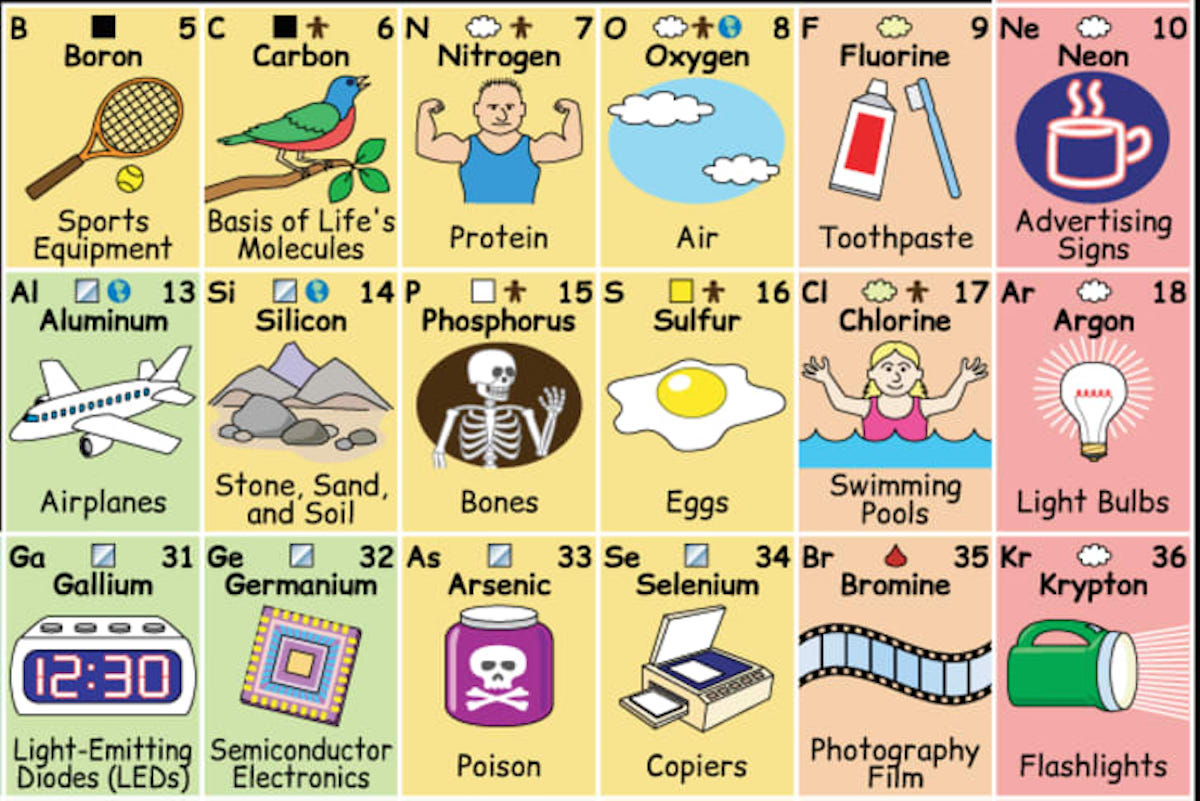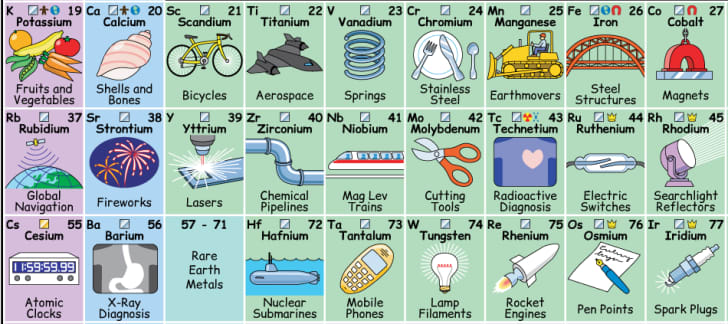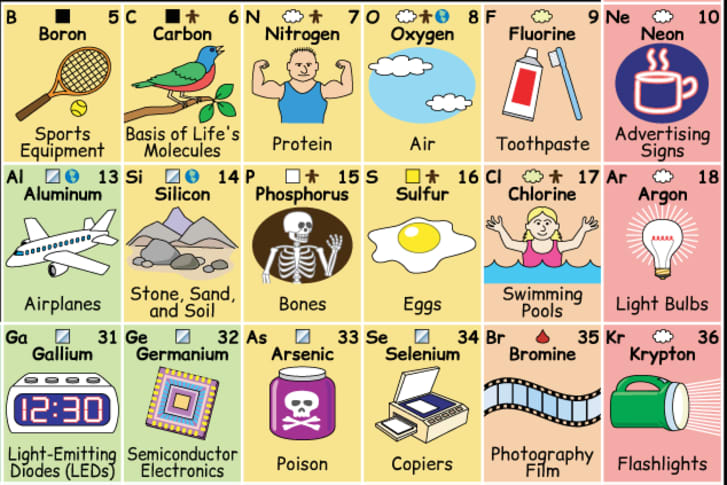Unique periodic table shows how we interact with each element in our everyday lives

According to a survey carried out by Philadelphia-based nonprofit The Science History Institute, most Americans (59% of us) can’t name more than 10 of the 118 elements on the periodic table. And one in five Americans can’t name a single element, according to Live Science.
Even if you can name all the elements on the table, do you know what they actually do in real life? If it’s time for a periodic table refresher course, these graphics created by Boeing software engineer Keith Enevoldsen might help.
First, a quick recap: The periodic table is a chart that arranges the chemical elements in order of increasing atomic number, lined up so elements that exhibit similar properties are arranged in the same row or column as others. The periodic table is considered to be one of the most useful scientific tools.
Enevoldsen’s version, named “The Periodic Table of Elements, in Pictures and Words,” has all the information found in a traditional periodic table, but includes pictographs and labels showing where you might come across each element in everyday life.
It was created to help students in elementary grades through high school, but can also be used by adults looking to brush up on their chemistry knowledge.
For instance, yttrium is paired with lasers, and osmium is next to a picture of pen points. Pretty cool, right?
And did you know boron is used to make sports equipment and sulfur is found in eggs?
According to Enevoldsen’s website, the elements are color-coded in the table according to the chemical groups.
“Other info panels describe atomic structure, chemical bonding, and radioactivity,” the website explanation continues. “It does not overload kids with a lot of detailed numbers, but it does provide some simple rules-of-thumb about atomic weights and valence numbers.”
The table can also be used to learn each element’s atomic number and material state (i.e. whether it is a solid, liquid or gas). The educational resource is available to print out and use as flashcards, or to buy as a full-sized poster.




